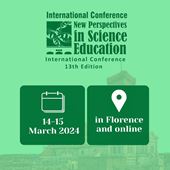The Use of Science Books and Children’s Literature in the Primary Science Classroom
Maeve Liston, Mary Immaculate College (Ireland)
Abstract
Internationally, there have been a number of policy documents published focusing on identifying and implementing means of improving literacy skills, for example ‘No Child Left Behind’ (Public Law, 2002) or ‘Race to the Top’ in the United States, the ‘Europe 2020’ strategy; and a ‘Vision for Literacy 2025’ policy in the UK. All such reactionary policies were published as a result of declining literacy levels among both adults and children worldwide. The National strategy in Ireland to improve literacy among children and young people states that we need to prioritise literacy through positive interventions and integrating these skills across the curriculum ((DES), 2011; Shiel, 2002).
Internationally published literature details how Science can be successfully integrated with literacy to teach Science concepts (Barber et al., 2006; Heisey and Kucan 2010; Jackson et al., 2010). Under this framework Irish Primary Schools are currently introducing best practice methodologies in literacy teaching. Professional development courses are being rolled out to facilitate this strategy. However, there have been no specific models of professional development designed and implemented on how literacy skills can be effectively developed in the Primary Science Classroom.
This research was therefore carried out to investigate teachers’ use of science books and children’s lietarture in science lessons. Their experiences of, opinions on and attitudes towards the use of children literature in Science lessons to enhance children’s literacy skills was also investigated. A questuonnaire was distributed to primary school tecahers of varying teaching experience (N=38).
Findings from the research showed that many teachers depend on specific ‘Science Books’ in their lessons and none of the teachers had used everyday children’s lietarature before in science lessons. The main reasons for this were as follows: 1. No professional development or workshops avaialable in this area; 2. the over crowded curriculum and 3. their lack of confidence to design science lessons incorporating children’s literature.
The results will be discussed in how this reaserach can inform the design and development of future frameworks, guidelines and professional development courses for the integration and effective development of literacy skills in Science lessons.
References
 New Perspectives in Science Education
New Perspectives in Science Education


























